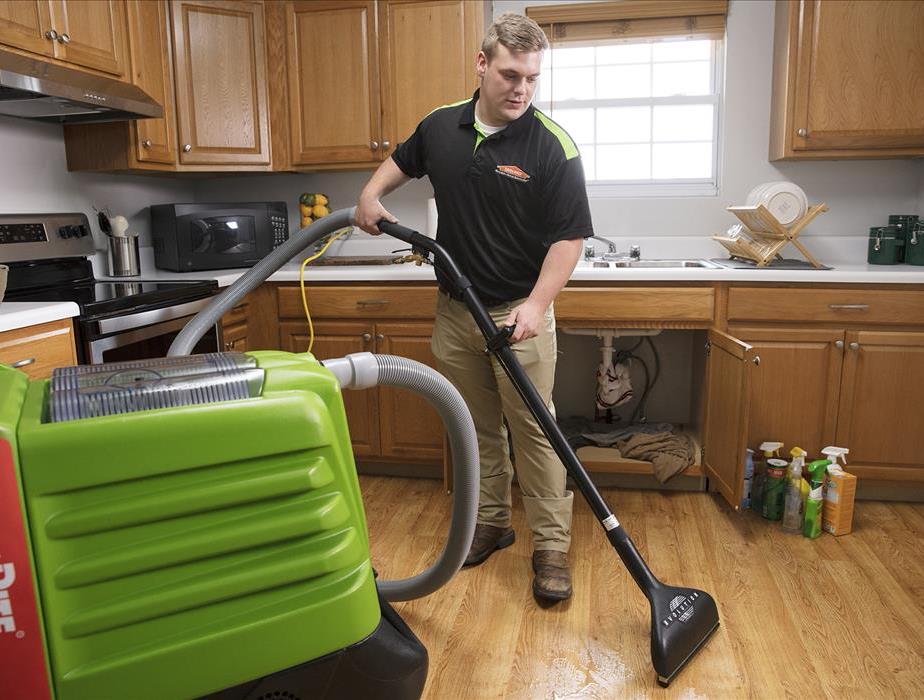Minimizing Your Water Damage Risks
6/4/2020 (Permalink)
 You can limit water damages with these simple steps.
You can limit water damages with these simple steps.
Imagine waking up in the morning and when you set your feet off the edge of the bed expecting to feel the warm welcome of carpet, you instead get the cold shock of stepping in water. It takes your mind a moment to move past the confusion and disbelief to snap into the reality of what is happening. The panic sets in as you scramble trying to discover what is happening and why. In your frantic searching, you can’t help but notice all of your belongings sitting in water. The range of emotions flooding you mind are broad and they are compounding quickly. The underlying feeling you can identify almost immediately, is one of being overwhelmed. Now there is some good news and bad news. The bad news is that approximately 14,000 water damages occur each day in a home or business and create an average of $7,000 per claim. The good news is that it is very easy to proactively prepare and protect yourself and your home. While it may be impossible to completely eliminate the possibility of experiencing a water damage, you can take steps to minimize the affects should one happen in your home.
Free to Low Cost:
- Regular Inspections
This one is the most beneficial and most important to do. Regularly inspecting supply lines, shut off valves, plumbing connections, water heater components, and any exposed pipe joints for signs of wear, discoloration, or damage will allow you to notice potential issues before they become a problem. Replace worn or damaged components as needed or have a plumber inspect and replace for you. - Watch your water bill
In Southern California, many of our water damages are slab leaks. There is almost never a visual indicator until it is too late. But one thing you can do to help catch a slab leak or any hidden leak before it become catastrophic is to carefully review your water bill for any abnormal changes in usage. A increase of usage outside the norm could be a sign of a problem. - Keep things things tidy
Should a water damage occur that is unavoidable, keeping your home clean and organized will help reduce the damages that occur. Try to limit or remove clutter, limit items placed or stored directly on the floor, and regularly cleaning the home will help prevent a potential claim from being larger than it needs to. Investment:
- Resilient flooring
A great way to help minimize damages is to invest in a resilient flooring option. Finished concrete, tile, and even vinyl planking can sometimes limit or prevent further damages when compared to hardwood/laminate or carpeting. It could be an investment not only into the resell value of your home, but also an investment in reducing liability. - Plastic Totes
Time and time again, we find homes that keep things stored in cardboard boxes. Whether in the garage or the office or a closet, these boxes almost inevitably end up stacked on the floor. Cardboard boxes are a great means of transporting things when you’re moving, but do nothing against protecting your items from water or pests. If you have items that will be stored long term, consider storing them in plastic totes and off the ground whenever possible. - Water Damage Sensors
If you have a home security system, chances are your provider now offers a water damage sensor. They operate exactly like a smoke or carbon monoxide detector, but are typically placed under sinks, near water heaters, or other statistically probable water damage sources. If you can’t prevent a water damage, the next best thing is catching it early. About SERVPRO of Fallbrook & South Oceanside
SERVPRO of Fallbrook & South Oceanside specializes in the cleanup and restoration of residential and commercial property after a fire, smoke or water damage event. Our staff is highly trained in property damage restoration. From initial and ongoing training at SERVPRO’s corporate training facility to regular IICRC-industry certification, rest assured our staff is equipped with the knowledge to restore your property.Need Emergency Service? Call Us 24/7 – (760) 451-0600.






 24/7 Emergency Service
24/7 Emergency Service
